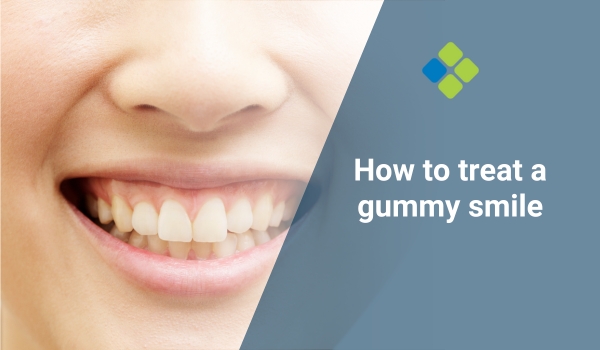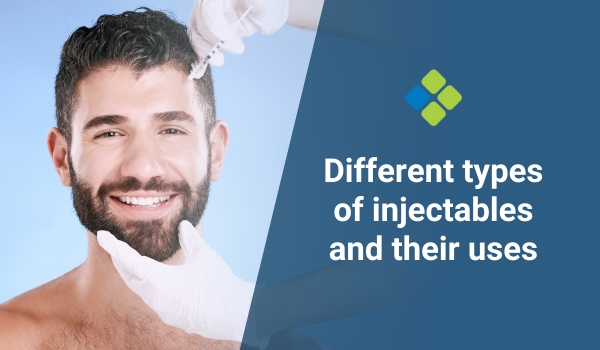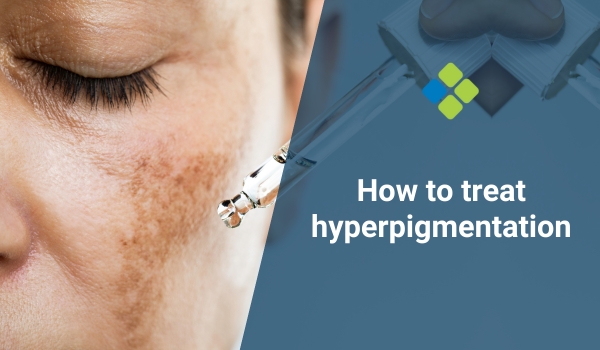How to treat a gummy smile
Learn about non-invasive cosmetic approaches to treat a gummy smile and help your patients achieve a beautiful, confident smile.

HealthCert Education
A gummy smile is a common cosmetic concern primary care doctors may encounter in their daily practice. That is why expanding the portfolio to include minimally invasive aesthetic medicine procedures is a great opportunity to increase overall patient satisfaction.
For further information on how to treat a gummy smile, you may be interested in the HealthCert online Professional Diploma program in Aesthetic Medicine.
What is a gummy smile?
A gummy smile is when a person's upper gums are more visible than usual when they smile. This can occur due to various reasons such as excessive gum tissue, a hyperactive upper lip muscle, or a short upper lip. A gummy smile is not a health concern. However, it can make people feel self-conscious and affect their confidence, which is why many seek treatment for it.
The condition may be treated by minimally invasive, orthodontic (aligners, braces, or gum contouring), and surgical (lip repositioning) procedures. The first option is the most suitable for primary care doctors looking to undergo additional training in aesthetic medicine.
Minimally invasive treatment options for a gummy smile
Minimally invasive cosmetic procedures that are effective in treating a gummy smile and suitable for a primary care setting include:
- Botulinum toxin injections
- Dermal fillers
- Laser treatment
Gummy smile treatment guidelines
Botulinum toxin
- Assess the patient's condition to ensure that they're a suitable candidate for the treatment. Determine the cause of the gummy smile. Review the patient's medical history, allergies, and previous experiences with Botulinum toxin.
- The amount of Botulinum toxin needed to treat a gummy smile depends on the severity of the condition. Typically, a dose of 2-3 units of Botulinum toxin is injected into the upper lip muscle to reduce its activity and prevent it from lifting too high when the patient smiles.
- Inject Botulinum toxin into the upper lip muscle, making sure to avoid the underlying blood vessels.
- Monitor the patient post-procedure to make sure there are no adverse effects such as swelling, bruising, or infection.
- Patients should avoid rubbing the treated area, exposing it to excessive heat or cold, or engaging in strenuous activities for at least 24 hours. They should also avoid taking any blood-thinning medications or supplements that may increase the risk of bruising.
Dermal fillers
- Examine the patient's facial features, including their lips and gums, and discuss their expectations and goals for the procedure.
- The type of dermal filler used to treat a gummy smile depends on the patient's individual needs. Hyaluronic acid fillers are commonly used for lip augmentation and can be injected into the upper lip to increase its volume and reduce the appearance of the gummy smile.
- Choose the amount of dermal filler needed to treat a gummy smile depending on the severity of the condition (aim for a natural look).
- Using a small needle, inject the dermal filler into the upper lip, making sure to avoid the underlying blood vessels.
- After the injection, the patient should be monitored to ensure that they're not experiencing any adverse effects, such as swelling, bruising, or infection.
Laser treatment
- Before administering laser treatment, you need to assess the patient's condition to ensure that they're a suitable candidate for the treatment.
- Choose the appropriate laser. Er: YAG and diode lasers are commonly used for gum contouring procedures.
- Use the laser to remove excess gum tissue and contour the gum line without damaging the surrounding tissue.
- Schedule follow-up appointments to assess the patient's response to the treatment and determine if any further treatment is needed.
- After the laser treatment, patients should avoid eating or drinking hot or spicy foods for at least 24 hours. They should also avoid brushing or flossing the treated area for a few days to allow the tissue to heal properly.
A gummy smile can have a significant impact on a person's self-confidence and quality of life. As a primary care physician, you can expand your portfolio by offering aesthetic procedures to your patients. However, it's essential to understand the cause of the gummy smile and refer your patients to esteemed experts for the most appropriate treatment, when necessary. By doing so, you can help your patients achieve a beautiful, confident smile and improve their overall well-being.
- Dr Rosmy De Barros
For further information on this topic, you may be interested in HealthCert's medical aesthetic training for doctors.
References:
- Bazargani, F., Ahrari, F., & Hosseini, M. (2015). Gingival smile assessment: Relation between smile height and gingival display. Journal of Clinical and Experimental Dentistry, 7(5), e592-e597.
- Crespo, D. A., Jr., & Teich, S. T. (2017). The relationship between maxillary anterior teeth and the gingival display upon smiling: A systematic review and meta-analysis. Journal of Esthetic and Restorative Dentistry, 29(4), 257-266.
- Lerner, H., & Mirza, N. (2018). The use of botulinum toxin in the management of gummy smile. The Journal of Clinical and Aesthetic Dermatology, 11(1), 45-48.
- Matsumoto, Y., Nishigawa, K., & Yoshida, Y. (2013). Effects of botulinum toxin type A injections on the mental nerve: A quantitative anatomic study. Journal of Oral and Maxillofacial Surgery, 71(4), 721-727.
- Mirzaei, A., Haghighat, A., & Jafari, S. (2019). Orthodontic treatment of gummy smile: A systematic review. Journal of Clinical and Experimental Dentistry, 11(9), e865-e874.

 1800 867 1390
1800 867 1390





